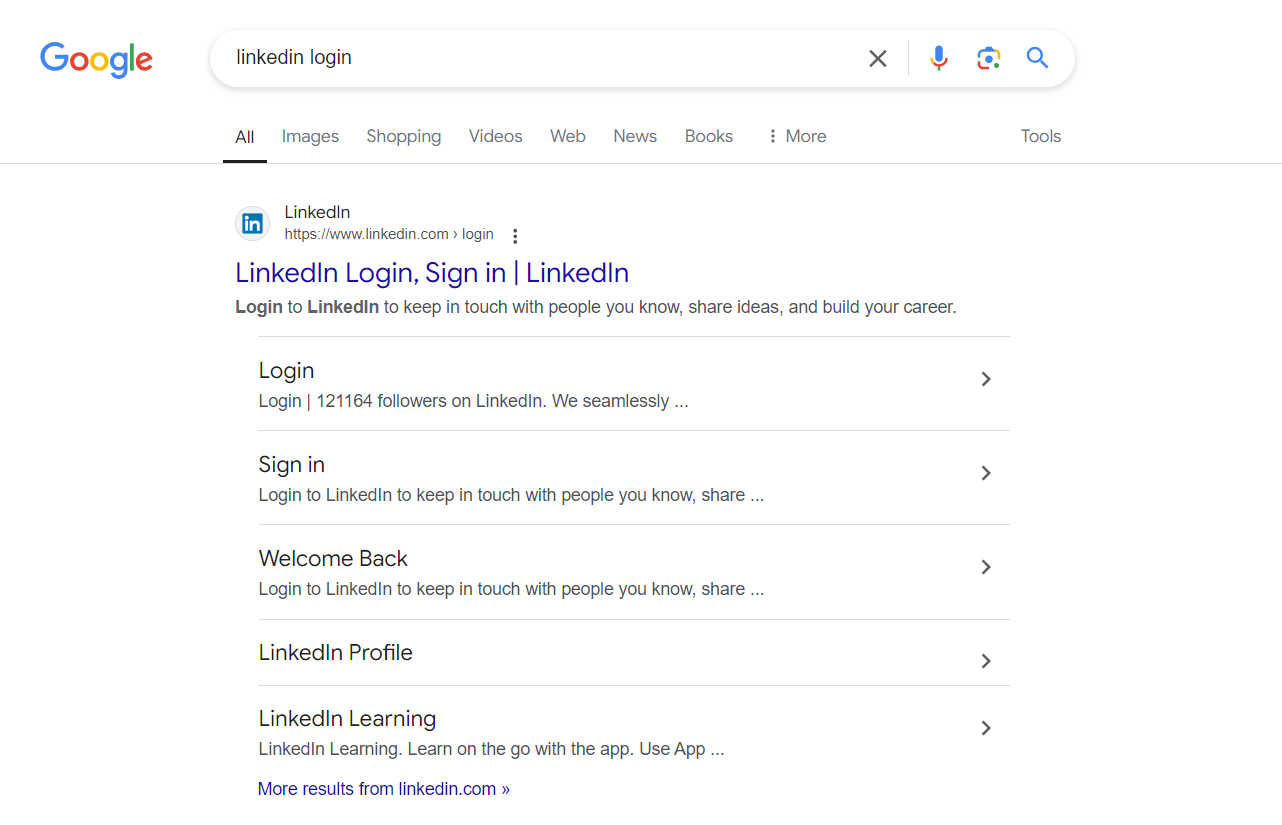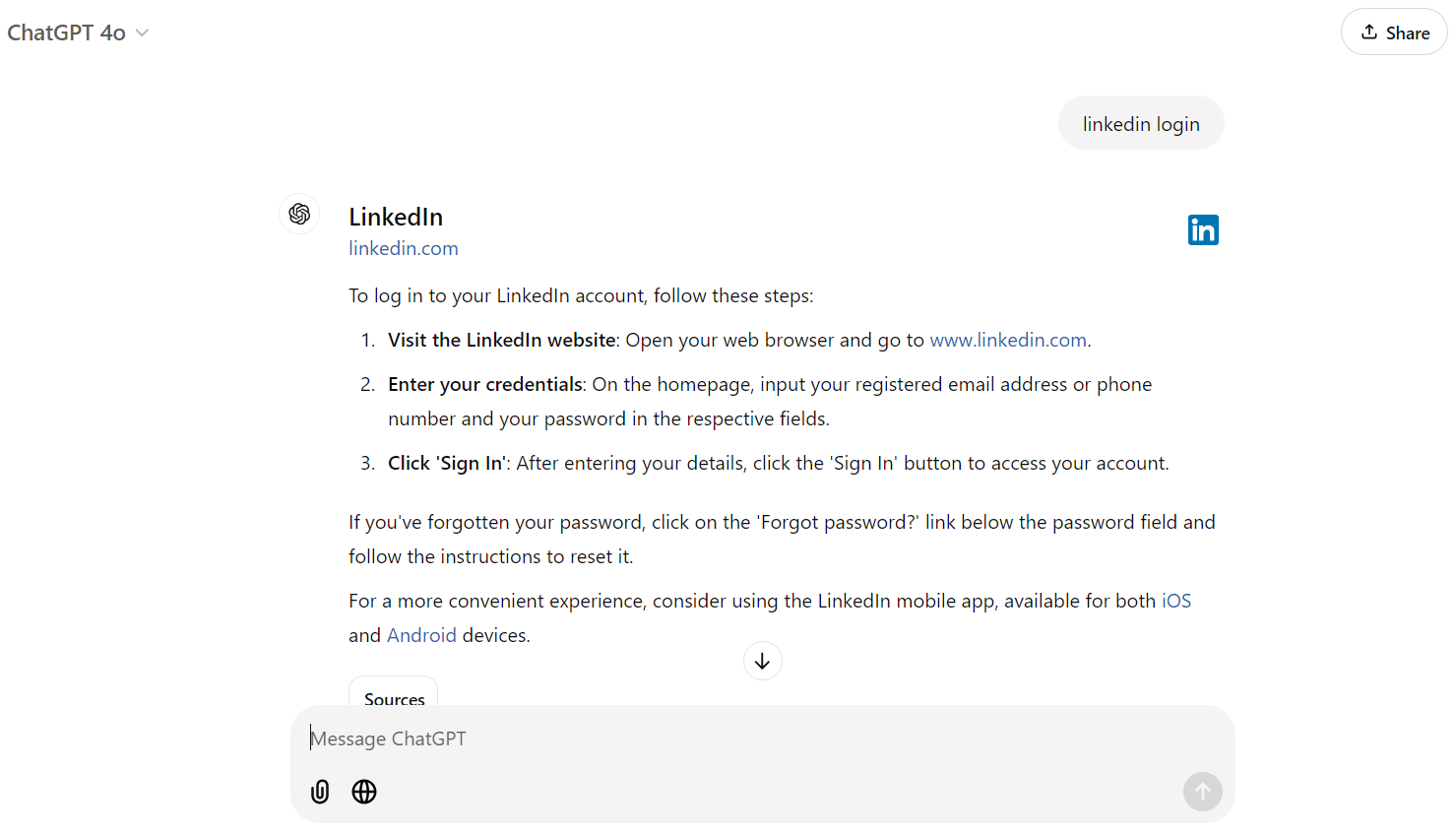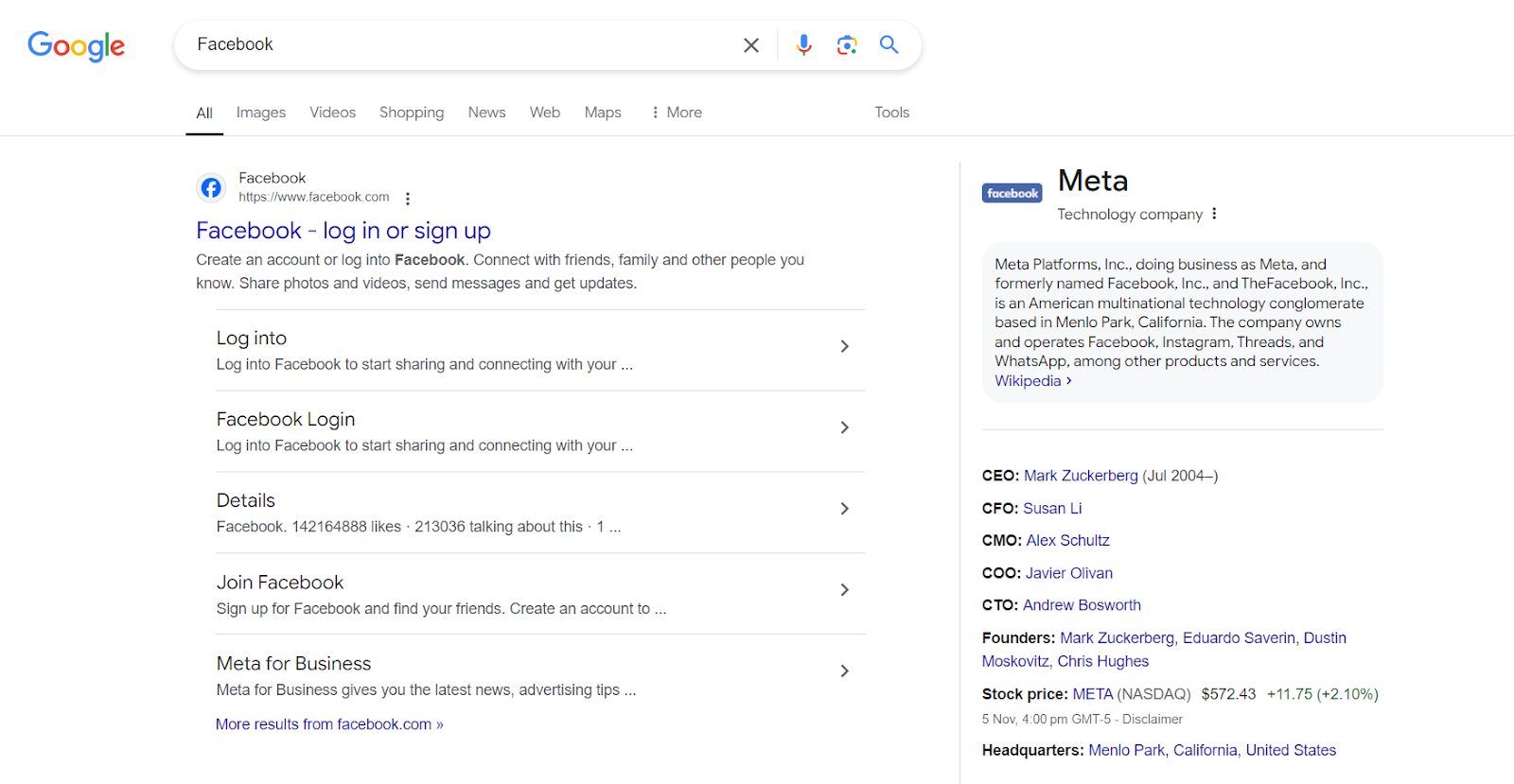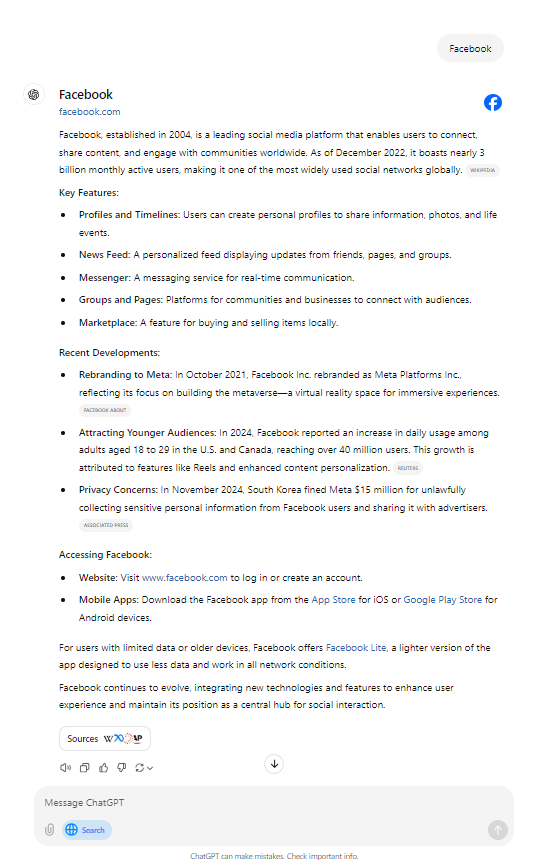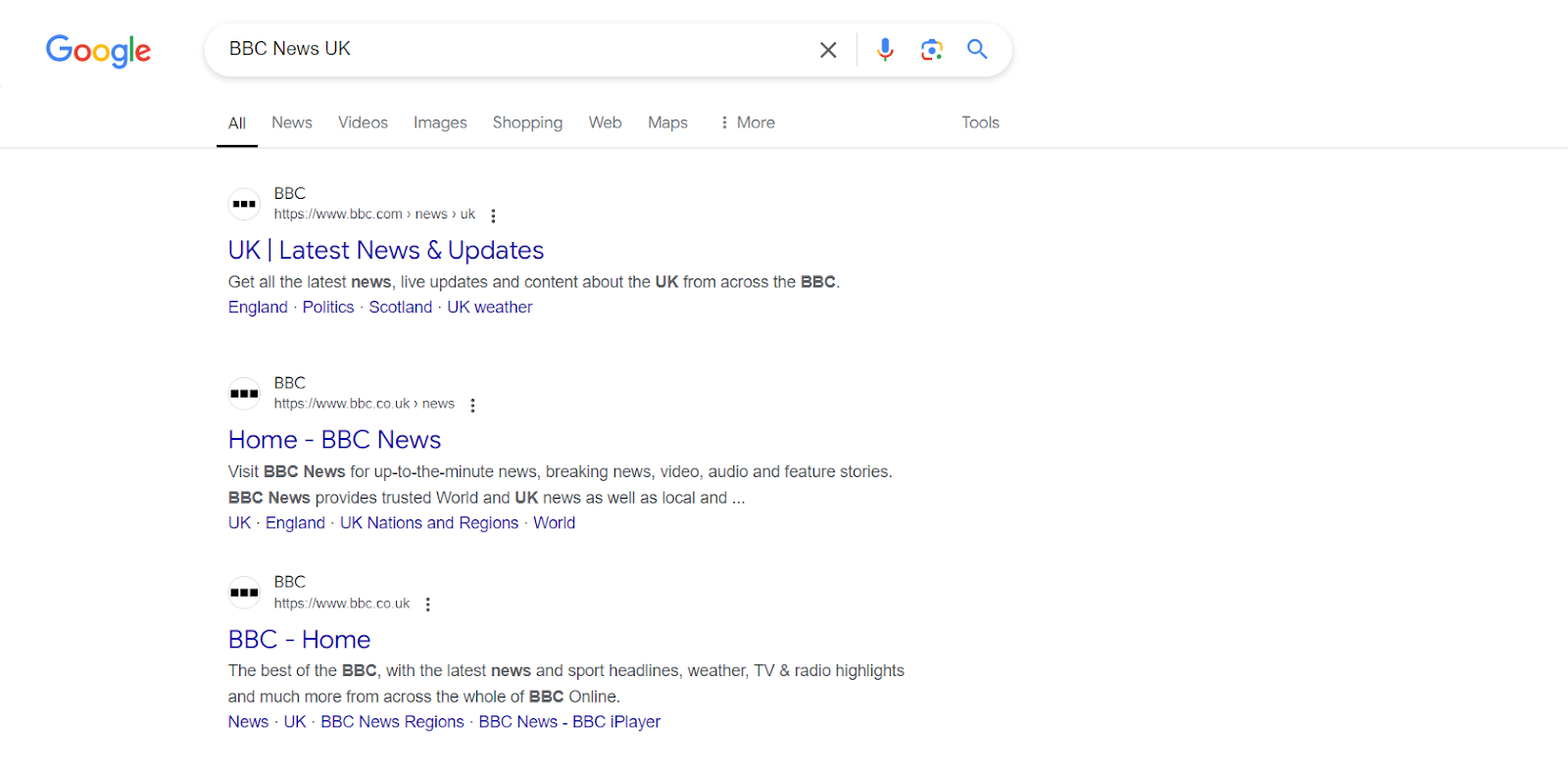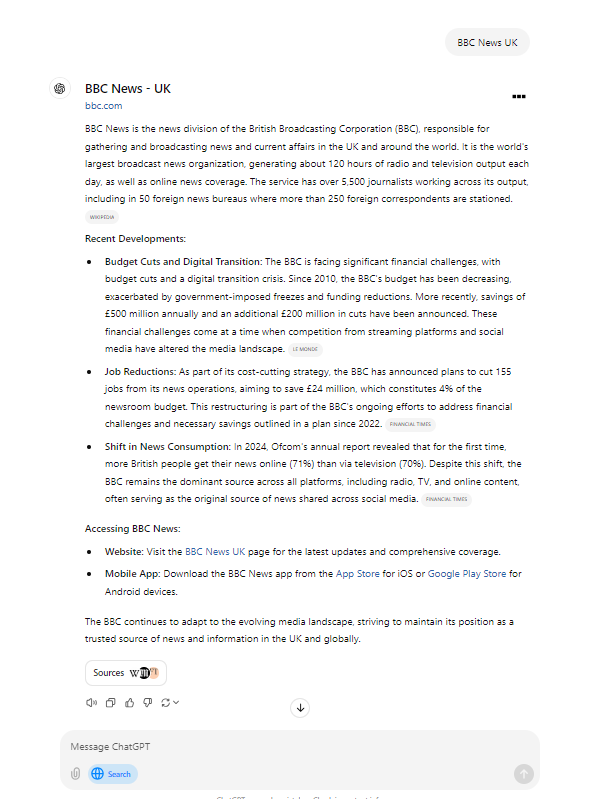In the fast-paced digital world, finding what you need quickly is essential. Navigational search is all about guiding users to a specific webpage or destination. With so many websites and platforms, having a reliable search tool isn’t just a convenience—it’s a necessity.
Navigational search enhances the user experience by making getting where you need to go easier without sifting through irrelevant content. It’s a crucial part of any digital strategy, whether you’re an SEO specialist, a content marketer, or a tech enthusiast.
Today, we’ll compare two heavyweights in navigational search: Google, the long-standing king of search engines, and SearchGPT, an innovative AI-driven tool. We’ll explore their strengths, weaknesses, and what makes each unique.
What are Navigational Searches?
A navigational search is a specific type of online search in which the user intends to reach a particular website or page. Unlike informational searches, which seek broad information on a topic, navigational searches aim for a specific destination.
- For instance, when users type “Amazon login” into a search engine, they look for the Amazon login page, not general information about Amazon.
Understanding navigational search is vital for SEO specialists and digital content creators. It can mean the difference between a user finding your content and going elsewhere.
Mastering this form of search helps ensure that your content appears at the right moment, ready to guide users directly to their desired destination. It’s a subtle art that combines keyword optimization with strategic content placement.
Navigational search also significantly simplifies the user experience. Providing direct routes to desired web pages eliminates frustration and saves time. Users appreciate the efficiency of navigational search, leading to higher satisfaction and, ultimately, more business conversions.
Overview of Google’s Navigational Search
Google has long been at the forefront of search technology, and its navigational search capabilities are no exception. When users engage with Google, they often encounter a smooth interface designed to predict and deliver results quickly. Features like predictive text and quick answers streamline the process, ensuring users find what they need without unnecessary clicks.
One of Google’s standout features is the Knowledge Graph, which provides immediate answers to common queries without needing to click through to another site. This tool is handy for navigational queries, offering snippets of information that guide users straight to their destination.
In practice, Google’s features mean searching for something like “LinkedIn login” returns the specific login page within seconds. The predictive text suggests the correct query before you’ve finished typing, and the quick answer box often highlights the best link. These elements work together to create a seamless, efficient navigational search experience.
Overview of SearchGPT’s Navigational Search
SearchGPT is a new player in the search world, leveraging the power of AI and natural language processing (NLP) to understand and respond to user queries. Unlike traditional search engines, SearchGPT focuses on context and understanding rather than just keywords. It aims to interpret the user’s intent and provide precise, context-aware responses.
What sets SearchGPT apart is its ability to engage in more conversational interactions. Traditional search engines deliver a list of links, but SearchGPT provides a direct answer or explanation. This approach can be particularly beneficial for navigational queries where users might appreciate more detailed guidance.
- For example, if you ask SearchGPT for the “LinkedIn login,” it doesn’t just provide a link but might also offer tips on navigating the platform or troubleshooting common login issues. This context-rich approach provides a fresh perspective on navigational search, adding depth to user interactions.
Comparative Analysis Examples
Brand or Website-specific Search
Google’s Approach
When comparing Google and SearchGPT on a query like “LinkedIn login,” the differences become evident. Google quickly identifies the most relevant link, ensuring users instantly land on the LinkedIn login page. Its predictive text and Knowledge Graph often mean users find what they need before finishing their search.
Strengths
- Immediate Relevance: Google’s key strength is its ability to deliver immediate relevance. With vast data, Google efficiently filters through web pages to present the most pertinent result, significantly reducing users’ search time.
- User-Friendly Interface: Google’s interface focuses on the user. Its clean design ensures even novice users can interact seamlessly with its search functions. The simplicity masks the complex algorithms that provide an optimal search experience.
- Comprehensive Data Integration: Google’s ability to integrate various data types—web searches, maps, images—into cohesive search results is unmatched. This allows users to find web pages, location-based results, images, or videos in one place.
- Enhanced Predictive Algorithms: Google’s predictive algorithms, powered by AI and machine learning, continuously learn and adapt to user behavior. Over time, Google’s search results become more tailored to individual users, offering a personalized search experience.
Weaknesses
- Privacy Concerns: One drawback of Google’s navigational search is its handling of user data. The large amount of personal data collected to tailor results raises ongoing privacy concerns.
- Algorithm Bias: Google’s search algorithm can sometimes produce biased results, influenced by past user data or dominant content types, potentially skewing what users see.
- Overemphasis on Popularity: Google’s focus on popular sources can overlook niche websites, potentially preventing users from finding less mainstream but relevant content.
- Search Engine Monopoly: As a dominant player, Google’s practices influence web visibility. Small algorithm changes can significantly impact website traffic and content creation.
SearchGPT’s Approach
Conversely, SearchGPT takes a more conversational approach. It provides the same link but might add context, such as login tips or account security advice. While this can be helpful, it might be optional for users seeking a rapid result.
Strengths
- Expanded Context: SearchGPT’s approach offers more than just a link; it provides additional context or advice related to the query. This can be beneficial for users seeking more in-depth information on a topic.
- Conversational Interaction: SearchGPT’s AI and NLP capabilities allow for more conversational interactions, creating a personalized experience for each user. This approach also enables users to clarify their queries or ask follow-up questions, leading to a deeper understanding of the topic.
- Less Reliance on Keywords: Unlike traditional search engines that rely heavily on keywords, SearchGPT uses context and understanding to provide relevant results. This means that even if the exact keyword isn’t included.
Weaknesses
- Limited Data Integration: Unlike Google, SearchGPT only focuses on web searches. This means less comprehensive results and a potential need for more diversity in content sources.
- Lack of Personalization: Since SearchGPT is a new player in the search world, its algorithms are still learning and may not offer the same level of personalization as Google. This could lead to less tailored results for users.
- Reliance on AI and NLP: As with any technology that relies heavily on AI and NLP, there is a risk of biased or incorrect responses based on the data input. Trusting this technology blindly could lead to misinformation.
Comparison summary
This comparison highlights how Google’s efficiency suits straightforward queries while SearchGPT adds value through additional context. The choice between the two depends on whether speed or information depth is the priority.
App or Platform-specific Search
Google’s Approach
When searching for “Facebook,” Google’s navigational prowess shines. It understands that users are likely seeking the Facebook homepage or app and delivers the desired link with minimal fuss. The search experience is streamlined, focusing purely on getting users to Facebook as quickly as possible.
Strengths
- Efficient Search Process: Google’s navigational search for apps or platforms is focused on speed, delivering the desired result without any unnecessary distractions.
- Accurate Predictive Text: Google’s predictive text often anticipates user intent, offering relevant options before users finish typing their query. This helps save time and avoid potential typos or misspellings.
- Intuitive Interface Design: Google’s interface design is simple, making it easy for even novice users to quickly navigate and find what they’re looking for.
Weaknesses
- Limited Contextual Information: Because Google focuses on speed, users may not receive additional context or information about the app or platform they are searching for. This could be a downside for users seeking more in-depth knowledge.
- Less Personalization: As with navigational searches in general, there is less personalization involved. The results are based solely on user intent and relevance to the search term rather than individual preferences.
SearchGPT’s Approach
SearchGPT, on the other hand, might provide a broader response. It could explain Facebook’s features or recent updates, offering a richer context. While informative, this approach might slow down the process for those who simply want to log in quickly.
Strengths
- Comprehensive Information: SearchGPT’s approach of providing additional context and information can benefit users seeking a deeper understanding of the app or platform they are searching for. This can also help users discover new features or updates.
- More Personalized Experience: SearchGPT’s AI and NLP capabilities allow for a more personalized experience, taking into account user preferences and previous interactions with the app or platform.
Weaknesses
- Slower Search Process: Providing additional context and information means that users may have to spend more time reading through search results before finding what they’re looking for. This could be a downside for those seeking a quick login process.
- Limited App-Specific Information: Since SearchGPT’s algorithms are still learning, there may be gaps in its information for specific apps or platforms. This could lead to less accurate or relevant results.
Comparison summary
In this scenario, Google’s straightforward results cater to users wanting speed, whereas SearchGPT offers a more nuanced, informative approach. It’s a classic case of choosing between efficiency and enriched content.
Location-specific Website Search
Google’s Approach
When evaluating searches like “BBC News UK,” Google’s localization features come into play. They recognize the geographic element of the query and direct users to the appropriate regional page with minimal input.
Strengths
- Efficient Localization: Google’s ability to recognize geographic elements in a search query and provide relevant results saves users time and effort.
- Tailored Content: By directing users to the regional page for their location, Google delivers more customized content likely to interest them.
- Accurate Predictive Text: Google’s predictive text often anticipates user intent, offering relevant options before users finish typing their query. This helps save time and avoid potential typos or misspellings.
Weaknesses
- Limited Contextual Information: Similar to navigational searches, Google’s focus on efficiency means there may be less additional context or information about the specific website being searched for.
- Lack of Personalization: The results are based solely on user intent and relevance to the search term rather than individual preferences, which may not cater to everyone’s interests or needs.
SearchGPT’s Approach
SearchGPT can also handle such queries but often includes additional context, such as recent headlines or news highlights. This enriches the user’s experience but may extend the time to reach the desired page.
Strengths
- Comprehensive Information: SearchGPT’s approach of providing additional context and information can benefit users seeking a deeper understanding of the website they are searching for. This can also help users discover new features or updates.
- More Personalized Experience: SearchGPT’s AI and NLP capabilities allow for a more personalized experience, taking into account user preferences and previous interactions with the website.
- Enriched Content: By including recent headlines or news highlights in the search results, SearchGPT offers a more comprehensive view of the website being searched for, which could be valuable to users.
Weaknesses
- Slower Search Process: Providing additional context and information means that users may have to spend more time reading through search results before finding the desired website. This could be a downside for those seeking quick access.
- Limited Localization: Unlike Google, which can easily direct users to the appropriate regional page, SearchGPT’s localization capabilities may still need to be developed, leading to less accurate or relevant results.
Comparison summary
In this instance, Google’s localized results offer quick access. At the same time, SearchGPT’s context provides a more in-depth exploration of the topic.
User Preferences and Use Cases
| SearchGPT | |
In scenarios where users prioritize speed and concise answers, Google is the preferred option for informational searches.
|
Conversely, SearchGPT becomes favoured when users seek comprehensive knowledge and an enriched understanding of a subject.
|
|
|
Therefore, whether users choose Google or SearchGPT depends on their specific informational needs and preferences for depth versus brevity.
Example use cases for each:
| Google for Cross-Referencing Information from Multiple Sources | SearchGPT for a Quick, Conversational Understanding |
|
|
|
|
|
|
Key Differences in User Experience and Implications for SEO Strategies
The comparative analysis reveals distinct differences in user experience between Google and SearchGPT.
| SearchGPT | |
|
|
|
|
Understanding these differences is crucial for SEO specialists and content creators.
- Leveraging Google’s strengths involves optimizing for speed and directness, ensuring content appears prominently in navigational searches.
- Meanwhile, harnessing SearchGPT’s capabilities requires creating context-rich content that answers queries with depth and relevance.
Visual Interface Comparison
The visual interfaces of Google and SearchGPT also significantly impact user experience.
| Google’s Visual Interface | SearchGPT’s Visual Interface |
|
|
|
|
While Google’s interface favors quick navigation, SearchGPT’s design encourages exploration and interaction. These visual differences influence user engagement, with each platform catering to different preferences.
Future Predictions for Navigational Search Technology
- Navigational search technology continues to evolve, driven by AI and machine learning advancements.
- The future promises even greater integration of natural language processing and context-aware responses, enhancing the accuracy and relevance of search results.
- Emerging trends point to increased personalization, with search engines tailoring results based on user behavior and preferences.
- This shift will likely benefit both Google and SearchGPT as they refine their approaches to meet individual needs.
- Additionally, the continued development of voice-activated search and AI-driven assistants will shape the digital search landscape.
- These technologies blur the lines between traditional search engines and AI-driven models like SearchGPT, offering a seamless, intuitive experience.
Conclusion
Navigational search is a critical component of today’s digital experience. It enhances user satisfaction by guiding users directly to their desired destinations. Our comparison of Google and SearchGPT highlights their unique strengths and approaches, offering valuable insights for SEO specialists and digital content creators.
Google’s efficiency and speed make it a reliable choice for straightforward searches. At the same time, SearchGPT’s context-rich responses provide more profound engagement. Both platforms offer distinct advantages, allowing users to choose based on their priorities.
For those in the digital marketing space, mastering navigational search involves understanding these differences and adapting strategies accordingly. By leveraging the strengths of both Google and SearchGPT, you can enhance your content’s visibility and user experience.
To explore these platforms further, experiment with Google and SearchGPT to determine which best suits your needs. And remember, digital search is continually evolving, so stay informed and adaptable as new developments arise.
Mastering the Future of Search and Marketing
When it comes to achieving exponential growth in the digital space, upGrowth stands out as a premier growth marketing agency. Our innovative strategies are designed to amplify your brand’s online presence, enhance customer engagement, and drive sustainable growth.
Dive into our blog series on Google vs. SearchGPT to discover how to optimize your search strategies for various search types on both platforms. Learn to leverage the best features of AI-driven and traditional search engines for maximum impact.
Whether you’re a novice or an experienced professional, our resources guide you through modern search dynamics.
With our support, your brand will not only grow but thrive in today’s competitive digital world.
Comparative Analysis Examples
Brand or Website-specific Search
Google’s Approach
When comparing Google and SearchGPT on a query like “LinkedIn login,” the differences become evident. Google quickly identifies the most relevant link, ensuring users instantly land on the LinkedIn login page. Its predictive text and Knowledge Graph often mean users find what they need before finishing their search.
Strengths
- Immediate Relevance: Google’s key strength is its ability to deliver immediate relevance. With vast data, Google efficiently filters through web pages to present the most pertinent result, significantly reducing users’ search time.
- User-Friendly Interface: Google’s interface focuses on the user. Its clean design ensures even novice users can interact seamlessly with its search functions. The simplicity masks the complex algorithms that provide an optimal search experience.
- Comprehensive Data Integration: Google’s ability to integrate various data types—web searches, maps, images—into cohesive search results is unmatched. This allows users to find web pages, location-based results, images, or videos in one place.
- Enhanced Predictive Algorithms: Google’s predictive algorithms, powered by AI and machine learning, continuously learn and adapt to user behavior. Over time, Google’s search results become more tailored to individual users, offering a personalized search experience.
Weaknesses
- Privacy Concerns: One drawback of Google’s navigational search is its handling of user data. The large amount of personal data collected to tailor results raises ongoing privacy concerns.
- Algorithm Bias: Google’s search algorithm can sometimes produce biased results, influenced by past user data or dominant content types, potentially skewing what users see.
- Overemphasis on Popularity: Google’s focus on popular sources can overlook niche websites, potentially preventing users from finding less mainstream but relevant content.
- Search Engine Monopoly: As a dominant player, Google’s practices influence web visibility. Small algorithm changes can significantly impact website traffic and content creation.
SearchGPT’s Approach
Conversely, SearchGPT takes a more conversational approach. It provides the same link but might add context, such as login tips or account security advice. While this can be helpful, it might be optional for users seeking a rapid result.
Strengths
- Expanded Context: SearchGPT’s approach offers more than just a link; it provides additional context or advice related to the query. This can be beneficial for users seeking more in-depth information on a topic.
- Conversational Interaction: SearchGPT’s AI and NLP capabilities allow for more conversational interactions, creating a personalized experience for each user. This approach also enables users to clarify their queries or ask follow-up questions, leading to a deeper understanding of the topic.
- Less Reliance on Keywords: Unlike traditional search engines that rely heavily on keywords, SearchGPT uses context and understanding to provide relevant results. This means that even if the exact keyword isn’t included.
Weaknesses
- Limited Data Integration: Unlike Google, SearchGPT only focuses on web searches. This means less comprehensive results and a potential need for more diversity in content sources.
- Lack of Personalization: Since SearchGPT is a new player in the search world, its algorithms are still learning and may not offer the same level of personalization as Google. This could lead to less tailored results for users.
- Reliance on AI and NLP: As with any technology that relies heavily on AI and NLP, there is a risk of biased or incorrect responses based on the data input. Trusting this technology blindly could lead to misinformation.
Comparison summary
This comparison highlights how Google’s efficiency suits straightforward queries while SearchGPT adds value through additional context. The choice between the two depends on whether speed or information depth is the priority.
App or Platform-specific Search
Google’s Approach
When searching for “Facebook,” Google’s navigational prowess shines. It understands that users are likely seeking the Facebook homepage or app and delivers the desired link with minimal fuss. The search experience is streamlined, focusing purely on getting users to Facebook as quickly as possible.
Strengths
- Efficient Search Process: Google’s navigational search for apps or platforms is focused on speed, delivering the desired result without any unnecessary distractions.
- Accurate Predictive Text: Google’s predictive text often anticipates user intent, offering relevant options before users finish typing their query. This helps save time and avoid potential typos or misspellings.
- Intuitive Interface Design: Google’s interface design is simple, making it easy for even novice users to quickly navigate and find what they’re looking for.
Weaknesses
- Limited Contextual Information: Because Google focuses on speed, users may not receive additional context or information about the app or platform they are searching for. This could be a downside for users seeking more in-depth knowledge.
- Less Personalization: As with navigational searches in general, there is less personalization involved. The results are based solely on user intent and relevance to the search term rather than individual preferences.
SearchGPT’s Approach
SearchGPT, on the other hand, might provide a broader response. It could explain Facebook’s features or recent updates, offering a richer context. While informative, this approach might slow down the process for those who simply want to log in quickly.
Strengths
- Comprehensive Information: SearchGPT’s approach of providing additional context and information can benefit users seeking a deeper understanding of the app or platform they are searching for. This can also help users discover new features or updates.
- More Personalized Experience: SearchGPT’s AI and NLP capabilities allow for a more personalized experience, taking into account user preferences and previous interactions with the app or platform.
Weaknesses
- Slower Search Process: Providing additional context and information means that users may have to spend more time reading through search results before finding what they’re looking for. This could be a downside for those seeking a quick login process.
- Limited App-Specific Information: Since SearchGPT’s algorithms are still learning, there may be gaps in its information for specific apps or platforms. This could lead to less accurate or relevant results.
Comparison summary
In this scenario, Google’s straightforward results cater to users wanting speed, whereas SearchGPT offers a more nuanced, informative approach. It’s a classic case of choosing between efficiency and enriched content.
Location-specific Website Search
Google’s Approach
When evaluating searches like “BBC News UK,” Google’s localization features come into play. They recognize the geographic element of the query and direct users to the appropriate regional page with minimal input.
Strengths
- Efficient Localization: Google’s ability to recognize geographic elements in a search query and provide relevant results saves users time and effort.
- Tailored Content: By directing users to the regional page for their location, Google delivers more customized content likely to interest them.
- Accurate Predictive Text: Google’s predictive text often anticipates user intent, offering relevant options before users finish typing their query. This helps save time and avoid potential typos or misspellings.
Weaknesses
- Limited Contextual Information: Similar to navigational searches, Google’s focus on efficiency means there may be less additional context or information about the specific website being searched for.
- Lack of Personalization: The results are based solely on user intent and relevance to the search term rather than individual preferences, which may not cater to everyone’s interests or needs.
SearchGPT’s Approach
SearchGPT can also handle such queries but often includes additional context, such as recent headlines or news highlights. This enriches the user’s experience but may extend the time to reach the desired page.
Strengths
- Comprehensive Information: SearchGPT’s approach of providing additional context and information can benefit users seeking a deeper understanding of the website they are searching for. This can also help users discover new features or updates.
- More Personalized Experience: SearchGPT’s AI and NLP capabilities allow for a more personalized experience, taking into account user preferences and previous interactions with the website.
- Enriched Content: By including recent headlines or news highlights in the search results, SearchGPT offers a more comprehensive view of the website being searched for, which could be valuable to users.
Weaknesses
- Slower Search Process: Providing additional context and information means that users may have to spend more time reading through search results before finding the desired website. This could be a downside for those seeking quick access.
- Limited Localization: Unlike Google, which can easily direct users to the appropriate regional page, SearchGPT’s localization capabilities may still need to be developed, leading to less accurate or relevant results.
Comparison summary
In this instance, Google’s localized results offer quick access. At the same time, SearchGPT’s context provides a more in-depth exploration of the topic.
User Preferences and Use Cases
| SearchGPT | |
In scenarios where users prioritize speed and concise answers, Google is the preferred option for informational searches.
|
Conversely, SearchGPT becomes favoured when users seek comprehensive knowledge and an enriched understanding of a subject.
|
|
|
Therefore, whether users choose Google or SearchGPT depends on their specific informational needs and preferences for depth versus brevity.
Example use cases for each:
| Google for Cross-Referencing Information from Multiple Sources | SearchGPT for a Quick, Conversational Understanding |
|
|
|
|
|
|
Key Differences in User Experience and Implications for SEO Strategies
The comparative analysis reveals distinct differences in user experience between Google and SearchGPT.
| SearchGPT | |
|
|
|
|
Understanding these differences is crucial for SEO specialists and content creators.
- Leveraging Google’s strengths involves optimizing for speed and directness, ensuring content appears prominently in navigational searches.
- Meanwhile, harnessing SearchGPT’s capabilities requires creating context-rich content that answers queries with depth and relevance.
Visual Interface Comparison
The visual interfaces of Google and SearchGPT also significantly impact user experience.
| Google’s Visual Interface | SearchGPT’s Visual Interface |
|
|
|
|
While Google’s interface favors quick navigation, SearchGPT’s design encourages exploration and interaction. These visual differences influence user engagement, with each platform catering to different preferences.
Future Predictions for Navigational Search Technology
- Navigational search technology continues to evolve, driven by AI and machine learning advancements.
- The future promises even greater integration of natural language processing and context-aware responses, enhancing the accuracy and relevance of search results.
- Emerging trends point to increased personalization, with search engines tailoring results based on user behavior and preferences.
- This shift will likely benefit both Google and SearchGPT as they refine their approaches to meet individual needs.
- Additionally, the continued development of voice-activated search and AI-driven assistants will shape the digital search landscape.
- These technologies blur the lines between traditional search engines and AI-driven models like SearchGPT, offering a seamless, intuitive experience.
Conclusion
Navigational search is a critical component of today’s digital experience. It enhances user satisfaction by guiding users directly to their desired destinations. Our comparison of Google and SearchGPT highlights their unique strengths and approaches, offering valuable insights for SEO specialists and digital content creators.
Google’s efficiency and speed make it a reliable choice for straightforward searches. At the same time, SearchGPT’s context-rich responses provide more profound engagement. Both platforms offer distinct advantages, allowing users to choose based on their priorities.
For those in the digital marketing space, mastering navigational search involves understanding these differences and adapting strategies accordingly. By leveraging the strengths of both Google and SearchGPT, you can enhance your content’s visibility and user experience.
To explore these platforms further, experiment with Google and SearchGPT to determine which best suits your needs. And remember, digital search is continually evolving, so stay informed and adaptable as new developments arise.
Mastering the Future of Search and Marketing
When it comes to achieving exponential growth in the digital space, upGrowth stands out as a premier growth marketing agency. Our innovative strategies are designed to amplify your brand’s online presence, enhance customer engagement, and drive sustainable growth.
Dive into our blog series on Google vs. SearchGPT to discover how to optimize your search strategies for various search types on both platforms. Learn to leverage the best features of AI-driven and traditional search engines for maximum impact.
Whether you’re a novice or an experienced professional, our resources guide you through modern search dynamics.
With our support, your brand will not only grow but thrive in today’s competitive digital world.


